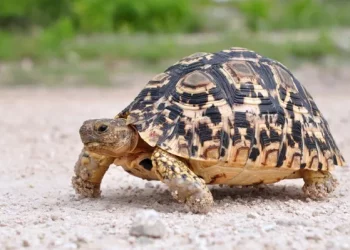Greek tortoises, scientifically known as Testudo graeca, are popular as pets due to their manageable size, charming personalities, and relatively straightforward care requirements. One of the fundamental aspects of caring for a Greek tortoise is understanding its dietary needs. This article explores the natural diet, nutritional requirements, feeding habits, and best practices for feeding Greek tortoises in captivity.
Understanding the Natural Diet of Greek Tortoises
Natural Habitat and Feeding Behavior
Greek tortoises are native to a wide range of habitats, including scrublands, grasslands, and forest edges across southern Europe, North Africa, and Southwest Asia. In the wild, they are opportunistic herbivores, meaning their diet primarily consists of various plant materials that are readily available in their natural environment.
Plant-Based Diet
The natural diet of Greek tortoises predominantly includes a variety of grasses, weeds, wildflowers, and leafy greens. They are known to consume plants such as dandelions, clover, plantains, thistles, and various types of succulents. These plants provide the necessary fiber, vitamins, and minerals essential for their growth, development, and overall health.
Seasonal Variation
In their natural habitat, Greek tortoises experience seasonal changes that influence the availability of food. During warmer months, when vegetation is abundant, they may have access to a diverse array of plants. In contrast, during cooler months or dry seasons, their diet may consist of fewer fresh plants, and they may rely on stored fat reserves to sustain them through periods of scarcity.
Nutritional Requirements of Greek Tortoises
Essential Nutrients
Greek tortoises require a balanced diet that provides essential nutrients to support their physiological functions and maintain optimal health. Key nutrients include:
Fiber: Essential for proper digestion and gut health.
Calcium: Crucial for shell growth and maintenance of skeletal health.
Vitamin D3: Necessary for calcium absorption and utilization.
Vitamin A: Important for vision, skin health, and immune function.
Protein: Needed for growth and tissue repair.
Calcium and Phosphorus Ratio
Maintaining the correct ratio of calcium to phosphorus is critical for Greek tortoises. A diet deficient in calcium or imbalanced with excess phosphorus can lead to metabolic bone disease (MBD), a serious health condition that weakens the tortoise’s bones and shell. Therefore, providing calcium-rich foods is essential to prevent nutritional deficiencies.
Feeding Greek Tortoises in Captivity
Recommended Diet for Captive Greek Tortoises
To replicate their natural diet in captivity, it is essential to offer Greek tortoises a diverse selection of leafy greens, vegetables, and occasional fruits. The following foods are commonly recommended for feeding Greek tortoises:
Leafy Greens
Leafy greens should form the foundation of a Greek tortoise’s diet. These include:
- Dandelion greens
- Endive
- Spring mix
- Collard greens
- Mustard greens
- Turnip greens
- Escarole
These greens provide essential vitamins, minerals, and fiber necessary for digestion and overall health.
Weeds and Wildflowers
Many weeds and wildflowers are safe and nutritious for Greek tortoises. These include:
- Dandelions
- Clover
- Plantains
- Chicory
- Hibiscus flowers
These plants offer a variety of flavors and textures that can enrich the tortoise’s diet.
Vegetables
Certain vegetables can be included in moderation to provide additional nutrients and variety:
- Bell peppers
- Carrots
- Squash
- Zucchini
- Cucumber (in small amounts)
These vegetables should be finely chopped or grated to facilitate easier consumption and digestion.
Fruits
Fruits should be offered sparingly as treats due to their higher sugar content. Suitable fruits include:
- Berries (e.g., strawberries, raspberries)
- Papaya
- Melons
- Apples (remove seeds)
Commercial Tortoise Pellets
Commercial tortoise pellets can be used as a supplemental food source to ensure adequate intake of essential nutrients. Choose pellets specifically formulated for herbivorous tortoises and use them as part of a balanced diet.
Feeding Practices and Guidelines
Feeding Frequency
Greek tortoises should be fed daily during the warmer months when they are most active and have higher energy requirements. Offer a variety of foods to ensure nutritional diversity. During cooler months or periods of reduced activity, adjust feeding frequency based on the tortoise’s behavior and appetite.
Portion Sizes
Offer food portions that are roughly the size of the tortoise’s shell. Avoid overfeeding, as excess food can lead to obesity and related health issues. Monitor the tortoise’s body condition and adjust portion sizes accordingly to maintain a healthy weight.
See Also: What is the Best Substrate for Red Footed Tortoise?
Variety and Rotation
Rotate the types of foods offered to provide nutritional variety and prevent dietary monotony. Offering a diverse selection of greens, vegetables, and occasional fruits mimics the natural variability of their diet in the wild and encourages healthy eating habits.
Hydration
Greek tortoises obtain much of their water from the foods they consume, but it is still important to provide access to fresh, clean water for drinking. Use a shallow dish that allows the tortoise to easily access and drink water as needed.
Special Considerations
Juvenile Tortoises
Juvenile Greek tortoises have higher protein and calcium requirements to support growth and shell development. Ensure they receive appropriate foods rich in these nutrients to promote healthy development.
Breeding Females
Breeding females may require additional nutrients to support egg production and reproductive health. Supplement their diet with calcium-rich foods and monitor their overall health during the breeding season.
Health Issues and Dietary Adjustments
Monitor your tortoise for signs of nutritional deficiencies or health problems such as soft shell, lethargy, or changes in appetite. Consult with a veterinarian experienced in reptile care if you suspect any health issues or need guidance on dietary adjustments.
Common Myths About Greek Tortoise Diet
Myth: Greek Tortoises Can Eat Lettuce as a Staple
Lettuce is low in nutritional value and should not be fed as a staple food for Greek tortoises. While some types of lettuce can be offered occasionally, they do not provide the essential nutrients needed for long-term health.
Myth: Greek Tortoises Only Eat Vegetables
While vegetables are part of their diet, Greek tortoises are herbivores that also require a variety of leafy greens, weeds, and occasional fruits to meet their nutritional needs. A balanced diet includes a diverse selection of plant-based foods.
Myth: Greek Tortoises Can Eat Any Plant
Not all plants are safe for Greek tortoises to consume. Some plants may be toxic or indigestible and should be avoided. Always research and verify the safety of plants before offering them to your tortoise.
Conclusion
Understanding and meeting the dietary needs of Greek tortoises is essential for their health and well-being in captivity. By replicating their natural diet with a variety of leafy greens, vegetables, occasional fruits, and supplemental foods, you can provide your tortoise with the essential nutrients needed for growth, maintenance, and overall vitality. Establishing good feeding practices, monitoring their dietary intake, and providing appropriate hydration are key aspects of caring for Greek tortoises. With proper nutrition and care, your Greek tortoise can live a long, healthy life as a cherished companion.
Related Topics:


























